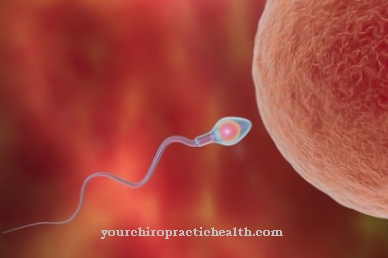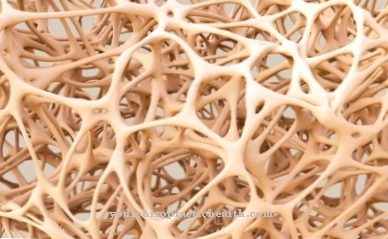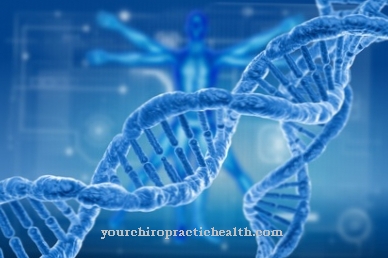One is big, the other smaller. Asians are, on average, shorter than Europeans and women are shorter than men. Some people also suffer from tall or dwarf stature due to a genetic defect. So it can be said that the height depends on very different factors such as age, gender, geographical origin and living conditions.
What is the height?

Body size is basically a biometric characteristic. To determine the height of a person, he is measured from the top of the head to the sole of the foot. The body size is used to identify a person and is also recorded in the identity card and passport.
In addition to the hereditary conditions, the height of a person is determined in particular by the quality of nutrition and living conditions in the first three years of life.
Diseases such as trisomy 21 or Klinefelter syndrome, on the other hand, are due to a genetic disorder. Those affected are significantly smaller (in trisomy 21) or significantly larger (in Klinefelter syndrome) than the average person.
The height of a person is also of great importance in science and research. Anthropometry deals with human body measurements, while auxology is dedicated to human growth.
According to various studies, people have grown by around 14 centimeters in the past 120 years. This development is mainly justified by the fact that the quality of nutrition and the standard of living have improved over the centuries.
Function & task
When a person takes in energy through food, the body first uses this to maintain organ activities and muscle work. The further amount of energy is then available for body growth. However, those who supply the body with too little energy through food do not have enough energy reserves for body growth.
Deficiency symptoms are not only associated with poor body growth, but also with an immune deficiency and an increased risk of disease. And illnesses, in turn, worsen the absorption of nutrients in the body, since the immune system of sick people needs more energy than usual. Therefore, body growth is very closely related to the health of the person.
Genetic researchers have recently discovered how body size is influenced at the genetic level. These findings can make research into diseases much easier. The research showed that the mTOR gene is not only responsible for cell growth, but also for human bone structure. According to Tim Frayling, a molecular geneticist at Exeter University, the results of Giant research can be very enlightening for the treatment of cancer, osteoporosis and heart problems.
These can also provide information on whether a child is growing normally. After all, there are perfectly healthy children who are simply genetically smaller than others.
Researchers can also use the genes to make statements about future body size. Because about 80 percent of a person's height is determined by their genetic makeup. The rest depend on nutritional conditions and other environmental factors. For example, a protein-rich and nutrient-rich diet can have a positive effect on the growth of the body.
Gender also plays an important role in body growth. Men are not only taller on average, but they also grow faster than women. Taking birth control pills may actually make this phenomenon worse. The increased dose of estrogen can presumably stop growth so that young girls between the ages of 14 and 15 will already reach their final height.
Illnesses & ailments
There are genetic disorders that affect a person's height. Trisomy 21 and Klinefelter's syndrome are the best-known diseases of this type.Trisomy 21 is a chromosome disorder that leads to dwarfism. Klinefelter syndrome, on the other hand, causes boys and men to be taller than the average. The dwarfism is often also due to malnutrition or a vitamin D deficiency. At the endocrine level, a metabolic disorder can also lead to a growth hormone deficiency. Such a deficiency inhibits body growth in developmental age, which in turn can lead to short stature. Metabolic disorders can be congenital or acquired in the course of life. The causes of a growth hormone deficiency can be accidents or injuries to the brain.
Researchers are now seeing a connection between body size and the development of tumors and cardiovascular diseases. In this case, body size is not the result, but one of the causes of certain diseases. Tall people probably suffer from cardiovascular disorders more often than short people. The cancer risk is also said to be higher in taller people, but these results so far only apply to women. The scientists at the British University of Oxford have shown in a study that the likelihood of developing one of the most common types of cancer such as breast or cervical cancer is 30 percent higher in a six-foot tall woman than a five-foot tall woman Woman. However, these results have not yet been clearly substantiated. Growth hormones could play a major role here, as they are responsible for the control and formation of new cells. Uncontrolled cell division by the growth hormones could therefore favor the formation of tumors.
Small people, on the other hand, are said to have an increased risk of heart disease. Researchers have discovered a direct genetic link between small size and the risk of heart disease. According to Prof. Thomas Meinertz, the chairman of the German Heart Foundation, gene parts have been found that prove this connection. For every 6.5 centimeter decrease in height, the risk of the disease increases by 13.5 percent.



























